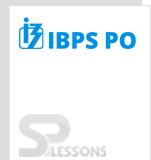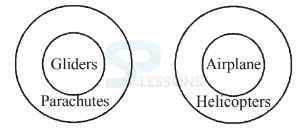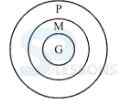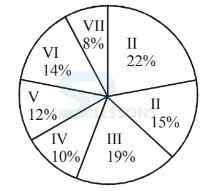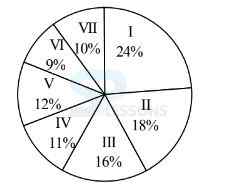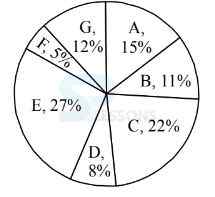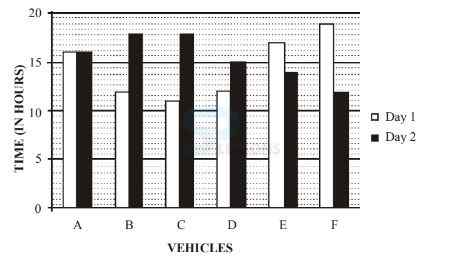 Introduction
Introduction
Career in Banking is one of the most lucrative and most sought after careers. In India, Bank Recruitment Exams are primarily conducted for recruitment of Probationary Officers, Clerks & Specialist Officers. India currently[2019] has 93 commercial and 27 public sector banks out of which 19 are nationalized and 6 are SBI and its associate banks and rest two are IDBI Bank and Bharatiya Mahila Bank, which are categorized as other public sector banks. Recruitment for Bank Probationary Officers, Management Trainees, Clerks and for various other posts generally follow a 3 step recruitment process: Preliminary Exam + Mains Exam + Interview & Group Discussion. The article IBPS PO Mains Practice Set presents a practice set for the most sought after IBPS PO recruitment. Until the year 2013, All Public Sector Banks used to conduct their own entrance test, GDs and Personal Interview for recruiting candidates. However, after 2014, IBPS started conducting recruitment Tests for 12 PSU Banks. IBPS holds a separate entrance test for recruitment.
Mains exams are very important to clear every government sector or bank related recruitment process in India. Only those candidates who are selected in the Mains round are allowed to move further up in the recruitment process. The marks obtained in the Mains exams are considered for the final merit list. Mains exams usually consist of 4 sections, with 155 questions with a time duration of 3 hours. Mains exams most certainly have negative marking.
 Quiz
Quiz
Directions Q (1 - 3): In each of these questions a few statements are followed by four conclusions numbered I, II, III and IV.
Consider the given statements to be true even if they seem to be at variance with commonly known facts. Read all the conclusion(s) and then decide which of the given conclusion(s) logically follow(s) from the given statements.
1. Statements:
A. All mirrors are phones.
B. Some phones are gadgets.
C. All gadgets are mirrors.
Conclusions: I. Some gadgets are phones.
II. Some gadgets are mirrors.
III. Some gadgets are not mirrors.
IV. Some mirrors are phones.
-
A. Only I and II follow
B. Either I or II follows
C. Only II and II follow
D. Either II or IV follow
E. None follows
-
A. Only II and IV follow
B. Only either I or III and IV follow
C. Only III and IV follow
D. Only I and IV follow
E. None follows
-
A. Only I and IV follow
B. Only I and either II or IV follow
C. Either II or IV follows
D. Only I, III or IV follow
E. None follows
-
A. Many of the residents formed a group and initiated a self- help micro-credit programme which provided help and support to the villagers to start a new business.
B. There was a time when the villagers had to seek favors from their urban counterparts.
C. Kenal lacks the new advancements and technological developments owing to a lack of urban intervention.
D. Many other villages are now approaching the people from Kenal to help them follow the same directions.
E. Women in Kenal too are realizing the importance of empowerment and are taking every possible step to add to their family’s kitty.
-
A. Only (A)
B. Only (B)
C. Only (C)
D. Only (D)
E. Both (A) and (E)
-
A. (A)
B. (B)
C. (C)
D. (D)
E. (E)
-
A. (A)
B. (B)
C. (C)
D. (D)
E. (E)
-
A. (B)
B. (C)
C. Both (C) and (E)
D. (A)
E. (D)
-
A. None
B. One
C. Two
D. Four
E. Five
-
A. P
B. V
C. W
D. T
E. Q
-
A. SW
B. WX
C. QW
D. QX
E. VR
-
A. R is the captain of South Africa
B. W is an immediate neighbor of V.
C. The captain of Australia and England are immediate neighbors.
D. Four people sit between W and Q.
E. X sits second to the left of S.
-
A. I and II are true
B. I and III are true
C. II and IV are true
D. I, III and IV are true
E. None of these
-
A. Only I is true
B. Only II is true
C. Only III is true
D. Only IV is true
E. Either III or IV is true
-
A. None is true
B. Only I is true
C. Only II is true
D. Only III is true
E. Only IV is true
-
A. I and III are true
B. II, III and IV are true
C. I and II are true
D. I, II and III are true
E. None of the above
-
A. None is true
B. Only I is true
C. Only II is true
D. Only III is true
E. Only IV is true
-
A. IV
B. V
C. VI
D. VII
E. None of these
-
A. Four
B. Five
C. Six
D. Seven
E. None of these
-
A. Four
B. Five
C. Six
D. Seven
E. None of these
-
A. 3
B. 6
C. 1
D. 7
E. Cannot be determined
-
A. of
B. mine
C. friend
D. lots
E. metal
-
A. 6 3 0 9
B. 5 2 1 6
C. 9 2 1 6
D. 3 6 9 4
E. 5 0 4 1
-
A. mine
B. metal
C. of
D. lots
E. a
-
A. a metal piece
B. metal for friend
C. piece of advise
D. friend of mine
E. large metal piece
-
A. 64 different characters
B. 128 different characters
C. 256 different characters
D. 512 different characters
E. 1024 different characters
-
A. hardware
B. ROM
C. RAM
D. memory
E. software
-
A. ringers
B. tracks
C. sectors
D. rounders
E. None of these
-
A. Mathematical symbol
B. Mnemonic
C. English word
D. Grammar
E. Scientific symbol
-
A. symbol
B. language
C. program
D. grammar
E. person who assembles the parts
-
A. query language
B. DML
C. DDL
D. Any of the above
E. None of these
-
A. Inter Relay chat
B. Internal Relay Chat
C. Internet Relay Chat
D. Internet Reliable Chat
E. Internal Reliable Chat
-
A. File infect or virus
B. Boot sector virus
C. Macro virus
D. Micro virus
E. E-mail virus
-
A. DTP software
B. Graphics software
C. System software
D. Application software
E. DSS software
-
A. the software doing the right job for the user
B. it being versatile enough to handle the job
C. the software being able to run on the computer
D. software running with other previously installed software
E. None of the above
Q P @ Q ⇒ P ≤ Q P ★ Q ⇒ P ≥ Q P # Q ⇒ P = Q Q12: Answer: Option B Q13: Answer: Option E Q14: Answer: Option A Q15: Answer: Option C Q16: Answer: Option D Q17: Answer: Option B Explanation: Job market is an important consideration in determining the curriculum of schools. Q18: Answer: Option E Explanation: There seems to be some common cause that is leading to deterioration in both kinds of education. Q19: Answer: Option E Explanation: Hike in fuel prices seems to be the common cause. Q20: Answer: Option E Explanation: From I: A is female Using this in II, we get: B = mother of A’s son’s only uncle’s son = mother of A’s son’s cousion = mother of A’s brother-in-law’s wife. Q21: Answer: Option B Explanation: Statement I is of no use because we don’t know the directions. Statement II is sufficient because distances and directions have been given propertly. Q22: Answer: Option E Explanation: From I: Arti’s birthday falls on Thu, Fri or Sat. From II: It falls on Sat, Sun or Mon Combining I and II, it falls on Sat. Answer: Option Q23: Answer: Option C Explanation: Input: power fail now 52 24 75 gate 34 Step I: 75 power fail now 52 24 gate 34 Step II: 75 fail power now 52 24 gate 34 Step III: 75 fail 52 power now 24 gate 34 Step IV: 75 fail 52 gate power now 24 gate 34 Step V: 75 fail 52 gate 34 power now 24 Step VI: 75 fail 52 gate 34 now power 24 Step VII: 75 fail 52 gate 34 now 24 power Hence step VI will be the last but one. Q24: Answer: Option A Explanation: Step II: 75 down 16 24 farm eager 62 sky Step III: 75 down 62 16 24 farm eager sky Step IV: 75 down 62 eager 16 24 farm sky Step V: 75 down 62 eager 24 16 farm sky Step VI: 75 down 62 eager 24 farm 16 sky Hence 6 – 2 = 4 more steps will be required. Q25: Answer: Option C Explanation: Input: 14 35 when they came 61 48 home Step I: 61 14 35 when they came 48 home Step II: 61 came 14 35 when they 48 home Step III: 61 came 48 14 35 when they home Step IV: 61 came 48 home 14 35 when they Step V: 61 came 48 home 35 14 when they Step VI: 61 came 48 home 35 they 14 when Q26: Answer: Option A Explanation: The upper 1 left element rotates by 90° CW while the other four rotate by 90° ACW. Q27: Answer: Option B Explanation: The whole figure rotates by 90° ACW. The first and the third, and the second and the fourth elements interchanged places. Q28: Answer: Option E Explanation: The first column from left becomes the second row from top. The second column from left becomes the lower row. The third column goes to the top while the fourth column becomes the third row. One element each is added in the first and second row from top while one element each is reduced from the third and fourth row from top. Q29: Answer: Option D Explanation: The whole figure rotates by 45° ACW while the end element gets inverted. Q30: Answer: Option C Explanation: The upper left rotates by 45° CW and the lower left rotates by 45° ACW. The upper right rotates by 135° CW and the lower right by 135° ACW. Q(31-35): a friend of mine = 4 9 1 6 ...(i) mine lots of metal = 3 1 0 9 ...(ii) a piece of metal = 7 1 6 3 ...(iii) From (i), (ii) and (iii), of = 1 ...(iv) From (i), (iii) and (iv), a = 6 ...(v) From (i), (ii), and (iv), mine = 9 ...(vi) From (i), (iv), (v) and (vi), friend = 4 ...(vii) From (ii), (iii) and (iv), metal = 3 ...(viii) From (ii), (iv), (vi) and (viii), lots = 0 ...(ix) From (iii), (iv), (v) and (viii), piece = 7 ... (x) Q31: Answer: Option D Q32: Answer: Option B Q33: Answer: Option C Q34: Answer: Option D Q35: Answer: Option E Q36: Answer: Option C Q37: Answer: Option E Q38: Answer: Option B Q39: Answer: Option B Q40: Answer: Option C Q41: Answer: Option A Q42: Answer: Option C Q43: Answer: Option C Q44: Answer: Option D Q45: Answer: Option C
Directions Q(46-50): Study the following information and answer the questions that follow:
The premises of a bank are to be renovated. The renovation is in terms of flooring. Certain areas are to be floored either with marble or wood. All rooms/halls and pantry are rectangular. The area to be renovated comprises of a hall for customer transaction measuring 23 m by 29 m, branch manager's room measuring 13 m by 17 m, a pantry measuring 14 m by 13 m, a record keeping cum server room measuring 21m by 13 m and locker area measuring 29 m by 21 m. The total area of the bank is 2000 square meters. The cost of wooden flooring is Rs. 170/- per square meter and the cost of marble flooring is Rs. 190/- per square meter. The locker area, record keeping cum server room and pantry are to be floored with marble. The branch manager's room and the hall for customer transaction are to be floored with wood. No other area is to be renovated in terms of flooring.
46. What is the respective ratio of the total cost of wooden flooring to the total cost of marble flooring.
61. What is respective ratio of the number of females in Production department to the number of females in the Marketing department?
66. What is the total cost of the production of item ‘I’ by companies A and C together in Rs. crore?
76. Which of the following vehicles travelled at the same speed on both the days?
As observed from table 2010 gets 4th rank. Hence, option (A) is correct.
Q58:
Answer: Option A
Explanation:
Increase in export in 2003 = [latex]\frac{(150 - 110)}{110}[/latex] x 100
[latex]\frac{40 }{110}[/latex] x 100 = 36.36%
Increase in export in 2004 = [latex]\frac{(150 - 150)}{150}[/latex] x 100 = 0%
Increase in export in 2005 = [latex]\frac{(200 - 150)}{150}[/latex] x 100 = 33.3%
Increase in export in 2006 = [latex]\frac{(200 - 175)}{200}[/latex] x 100 = 12.5%
Increase in export in 2007 = [latex]\frac{(200 - 175)}{175}[/latex] x 100 = 14.28%
Increase in export in 2008 = [latex]\frac{(275 - 200)}{200}[/latex] x 100 = 37.5%
In 2009 there is decrease.
Increase in export in 2010 = [latex]\frac{(260 - 200)}{200}[/latex] x 100 = 30%
In 2011 there is decrease. From above it is clear that the fifth largest annual percentage in export was recorded in 2007 i.e., 14.28%.
Hence, option (A) is correct.
Q59:
Answer: Option A
Explanation:
In the year 2003, 2004, 2005, 2007, 2008, 2009, 2011 there is no increase in import.
Increase in export in 2006 = [latex]\frac{(270 - 225)}{225}[/latex] x 100 = 20%
Increase in export in 2010 = [latex]\frac{(200 - 175)}{175}[/latex] x 100 = 14.28%
In 2010 there is second largest percentage increase in import. Hence, option (A) is correct.
Q60:
Answer: Option A
Explanation:
The maximum percentage increase in exports is in 2008 i.e., 37%.
The minimum percentage decrease in imports is in 2003
i.e. = [latex]\frac{(275 - 250)}{250}[/latex] x 100 = 9.09%
Hence, required % = 37.5 – 9.09 = 28%
Q61:
Answer: Option B
Q62:
Answer: Option B
Explanation:
Required percentage = [latex]\frac{24}{16}[/latex] x 10 = 150
Q63:
Answer: Option B
Q64:
Answer: Option D
Q65:
Answer: Option E
Q66:
Answer: Option B
Q67:
Answer: Option D
Q68:
Answer: Option E
Q69:
Answer: Option A
Q70:
Answer: Option C
Q71:
Answer: Option B
Q72:
Answer: Option D
Q73:
Answer: Option E
Q74:
Answer: Option E
Q75:
Answer: Option B
Q76:
Answer: Option D
Q77:
Answer: Option C
Q78:
Answer: Option E
Q79:
Answer: Option E
Q80:
Answer: Option B
-
A. 1879 : 2527
B. 1887 : 2386
C. 1887 : 2527
D. 1829 : 2527
E. 1887 : 2351
-
A. Rs. 1,36,800/-
B. Rs. 2,16,660/-
C. Rs. 1,78.790/-
D. Rs. 2,11,940/-
E. None of these
-
A. Rs. 5,820/-
B. Rs. 4,848/-
C. Rs. 3,689/-
D. Rs. 6,890/-
E. None of these
-
A. 2.2
B. 2.4
C. 4.2
D. 4.4
E. None of these
-
A. Rs. 2,29,100/-
B. Rs. 2,30,206/-
C. Rs. 2,16,920/-
D. Rs. 2,42,440/-
E. None of these
-
A. Either 12 or 13
B. Either 11 or 12
C. Either 10 or 11
D. Either 9 or 11
E. Either 9 or10
-
A. Rs. 18,244
B. Rs. 19,500
C. Rs. 16,285
D. Rs. 18,566
E. Rs. 17,364
-
A. 6 years
B. 4 years
C. 3 years
D. Cannot be determined
E. None of these
-
A. 504 seconds
B. 940 seconds
C. 1008 seconds
D. 470 seconds
E. None of these
-
A. 12.5 minutes
B. 15 minutes
C. 10 minutes
D. 18 minutes
E. None of these
Details of 1500 employees working in an Organisation in various scales Breakup of 1500 employees “across the scales
Breakup of 800 male employees “across the scales
56. How many females are working in Scale II?-
A. 144
B. 81
C. 96
D. 138
E. None of these
-
A. 7 : 8
B. 2 : 1
C. 8 : 7
D. 1 : 2
E. None of these
-
A. 219
B. 157
C. 162
D. 285
E. None of these
-
A. 35
B. 46
C. 44
D. 34
E. None of these
-
A. 32 : 23
B. 22 : 33
C. 12 : 23
D. 23 : 12
E. None of these
Total number of employees in different departments of an organization and (of these) percentage of females and males
| Department | Total Number of Employees | Percentage of Females | Percentage of Males |
|---|---|---|---|
| IT | 840 | 45 | 55 |
| Accounts | 220 | 35 | 65 |
| Production | 900 | 23 | 77 |
| HR | 360 | 65 | 35 |
| Marketing | 450 | 44 | 56 |
| Customer Service | 540 | 40 | 60 |
-
A. 22 : 23
B. 35 : 33
C. 23 : 22
D. 33 : 35
E. None of these
-
A. 311 : 269
B. 268 : 319
C. 269 : 311
D. 319 : 268
E. None of these
-
A. 3260
B. 3310
C. 3140
D. 3020
E. None of these
-
A. 149
B. 178
C. 157
D. 164
E. 137
-
A. 687
B. 678
C. 768
D. 876
E. None of these
Percentage of the total production produced by the seven companies
Cost of the total production (both items together) by seven companies. = Rs. 25 crores Ratio of production between items I and II and the per cent profit earned for tshe two items.| Company | Ratio of Production | Percent Profit Earned | ||
|---|---|---|---|---|
| Item II | Item I | Item I | Item II | |
| A | 2 | 3 | 25 | 20 |
| B | 3 | 2 | 32 | 35 |
| C | 4 | 1 | 20 | 22 |
| D | 3 | 5 | 15 | 25 |
| E | 5 | 3 | 28 | 30 |
| F | 1 | 4 | 35 | 25 |
| G | 1 | 2 | 30 | 24 |
-
A. 9.25
B. 5.9
C. 4.1625
D. 4 : 9
E. None of these
-
A. Rs. 3.125 crores
B. Rs. 31.25 crores
C. Rs. 3.125 Lakhs
D. Rs. 31.25 Lakhs
E. None of these
-
A. 16%
B. 33.33%
C. 66.67%
D. 12.5%
E. None of these
-
A. Rs. 78 lakhs
B. Rs. 1.62 crores
C. Rs. 7.8 crores
D. Rs. 16.2 lakhs
E. None of these
-
A. 3 : 5
B. 1 : 2
C. 2 : 1
D. 2 : 3
E. None of these
-
A. Rs. 9.78 crores
B. Rs. 97.8 lakhs
C. Rs. 52.8 lakhs
D. Rs. 5.28 crores
E. None of these
-
A. C and D
B. B and G
C. A and D
D. C and F
E. A and B
-
A. Only I
B. Only II
C. Only III
D. Any one of the three
E. All the three statements are necessary to answer the question.
-
A. Only I and II
B. Only II and III
C. Only I and III
D. Any two of the three
E. Either II or III only
-
A. Only I
B. Only II
C. Only III
D. All the three statements are necessary to answer the question
E. Questions cannot be answered even with the information given in all the three statements.
TIME TAKEN TO TRAVEL (IN HOURS) BY SIX VEHICLES ON TWO DIFFERENT DAYS
DISTANCE COVERED (IN KILOMETERS) BY SIX VEHICLES ON EACH DAY
| Vehicle | Day 1 | Day 2 |
|---|---|---|
| A | 832 | 864 |
| B | 516 | 774 |
| C | 693 | 810 |
| D | 552 | 765 |
| E | 935 | 546 |
| F | 703 | 636 |
-
A. Vehicle A
B. Vehicle C
C. Vehicle F
D. Vehicle B
E. None of these
-
A. 7 km/hr.
B. 12 km/hr.
C. 11 km/hr.
D. 8 km/hr.
E. None of these
-
A. 15.3
B. 12.8
C. 11.5
D. 13.8
E. F
-
A. 80
B. 65
C. 85
D. 95
E. 90
-
A. 15:13
B. 17:13
C. 13:11
D. 17:14
E. None of these
| Year | Absolute diff. |
|---|---|
| 2002 | 165 |
| 2003 | 100 |
| 2004 | 75 |
| 2005 | 25 |
| 2006 | 95 |
| 2007 | 0 |
| 2008 | 100 |
| 2009 | 25 |
| 2010 | 60 |
| 2011 | 75 |
Directions(81-90): Read the following passage carefully and answer the questions given below it. Certain words/phrases have been printed in bold to help you locate them while answering some of the questions.
A few weeks ago, a newspaper article quoted a well-known scientist saying, "IT has destroyed Indian science". One caji speculate about the various ways in which the growth of the IT sector and other similar knowledge industries such as biotechnology has led to a decline in basic scientific research in India.
The most obvious reason is money; pay scales in IT and BT are much higher than one can aspire to in academia. The argument goes: why should a bright B. Tech, or M.Sc. A student enrolled in a Ph.D. programme when she can make a lot more money writing code? Not only does a fresh IT employee make a lot more than a fresh M.Tech. Student, his/her pay will rise much faster in IT than in academia. A professor's pay at a government-run university, even after the Sixth Pay Commission, tops out at far less than a senior executive's salary in major industry.
Second, the social Status of IT and BT Jobs equal or even exceed the social status of corresponding academic positions, since they are seen as knowledge industries, which plays to the best and worst instincts of the societal Order. As quintessential white collar professions, neither do they compel a successful entrepreneur to resort to violence and corruption, nor do they demand any physical labor. Unlike real estate or road construction, it is feit that IT workers can become rich while staying honest and sweat-free.
Assuming that the labor pool for academia and IT is roughly the same, the difference in our collective preferences biases the labor market towards IT and away from academia. Further, when the imbalance between IT and academia continues for years and even decades, a destructive loop, from academia’s point of view, is created. When our best and brightest take IT jobs over academic ones for a decade or more, faculty positions in our universities and research centers are no longer filled by the best candidates. As faculty quality goes down, so does the capacity to train top- class graduate students who, after all, are teachers in training. In response to decreasing faculty quality, even those students who otherwise, choose an academic profession, decide to join the industry Or go abroad for their studies. These foreign trained graduates prefer to come back to corporate India — if at all they do come back — and the downward cycle replicates itself in each generation. In other words, academia is trapped within a perfect storm created by a combination of social and economic factors. In this socio-economic calculus, the members of our societal classes should prefer an IT job to an academic one. Or, to put it another way, the knowledge economy, i.e., the creation of knowledge for profit trumps the knowledge society, i.e., the creation of knowledge for its own sake or the sake of the greater good. As is said, “knowledge is power, but money is even more power.” Perheps the scientist was alluding to this victory of capitalism over the pursuit of pure knowledge when he accused IT of having a negative influence on Indian science.
Surely, knowledge has become a commodity like any other and as a result, knowledge workers are like any other laborers, who will sell their wares to the highest bidder. One Solution is to accept and even encourage the commoditization of knowledge; if so, Indian universities and research centers should copy their western counterparts by becoming more and more like corporations. Thesecentres of learning should convert themselves into engines of growth. In this logic, if we increase academic salaries and research grants to match IT paycheques we will attract good people into academia, where, in any case, it is rumored that a certain elusive feeling called ‘the quality of life’ is better.
81. According to the passage, what did the scientist actually mean when he said, “IT has destroyed Indian Science?
-
A. The center means for Scientific research is being utilized by IT industries
B. The IT industry does not employ people pursuing higher studies
C. As information is readily available on the internet because of IT, there is no need to seek further information
D. IT has distorted the truth as stated by Indian science
E. The desire for money has overshadowed the search for knowledge
-
A. Is the Future of IT Bright?
B. The IT Industry and the World Economy
C. Research and Academics — Losing the Battie Against IT
D. Scientific Research and the Need for Well — Trained Faculty
E. Information Technology and its Advantages
-
A. Only (C)
B. Only (A)
C. Only (B) and (C)
D. Only (A) and (C)
E. None of these
-
A. Only (A) and (C)
B. Only (B)
C. Only (A) and (B)
D. Only (B) and (C)
E. All (A), (B) and (C)
-
A. Only(A)
B. Only (C)
C. Only (B) and (C)
D. Only (A) and (B)
E. All (A), (B) and (C)
-
A. Only (B)
B. Only (A) and (B)
C. Only (C)
D. Only (B) and (C)
E. All (A), (B) and (C) are true
-
A. qualification
B. capability
C. voltage
D. quantity
E. volume
-
A. referring
B. breaking
C. escaping
D. imposing
E. clinging
-
A. soft
B. dark
C. dull
D. vivid
E. dim
-
A. definite
B. happy
C. mysterious
D. worthwhile
E. remarkable
-
A. A
B. B
C. C
D. D
E. E
-
A. E
B. F
C. A
D. D
E. B
-
A. A
B. B
C. C
D. D
E. E
-
A. B
B. C
C. D
D. E
E. F
-
A. A
B. B
C. C
D. D
E. E
-
A. killing
B. alive
C. born
D. left
E. lost
-
A. speak
B. told
C. estimation
D. believe
E. consider
-
A. shape
B. development
C. deterioration
D. warmth
E. expansion
-
A. altered
B. created
C. produced
D. made
E. brought
-
A. void
B. dissipate
C. argument
D. reverse
E. increase
-
A. delay
B. birds
C. slowdown
D. hasten
E. acceleration
-
A. spare
B. bear
C. destroy
D. amend
E. generation
-
A. animals
B. difficulty
C. issues
D. humans
E. problem
-
A. extinction
B. better
C. wealth
D. sugma
E. demand
-
A. endangered
B. threaten
C. evaluated
D. living
E. compared
-
A. fight talked
B. argument, met
C. dispute, seen
D. quarrel, admired
E. difference, introduced
-
A. who, indicated
B. whom, decided
C. which, threatened
D. them, resolved
E. number warned
-
A. demolished, fast
B. announced, less
C. provided, high
D. acquired, low
E. promised, subsidized
-
A. indebted, necessary
B. plagued, vital
C. coping, more
D. hurt, critical
E. shaken, inevitable
-
A. A-C
B. A-B
C. C-D
D. B-D
E. A-D
-
A. A-C
B. A-B
C. B-C
D. B-D
E. A-D
-
A. A-B
B. B-D
C. A-C
D. A-D
E. D-C
-
A. India provides the highest number of IT experts to the world every year
B. many people in rural areas still remain ignorant of its immense benefits
C. government has done its best by funding research in this field appropriately
D. the face of communication in the years to come would change completely from the bygone years
E. None of these
-
A. experts have a lot of expectations from this cleaner method of producing energy
B. the government is determined to extract maximum out of this technology in the near future
C. the international lobby has been pressurizing the developing nations to shift their energy production from coal to nuclear power.
D. the problem of locating adequate numbers of uranium reserves to run the reactors is yet to be sorted out
E. None of these
-
A. the government ordered an inquiry which exposed a nexus between mine operators and bureaucrats
B. it caused great damage to the surrounding ecosystem and the environment in general
C. the officials have been irresponsible in failing to bring it to the notice of the court in time
D. the powerful mining lobby had bribed the officials to | obtain a permit for mining on ecologically sensitive land
E. None of these
116. Which of the following is the apex institution in the matter?
-
A. HUDCO
B. IRBI
C. IFCI
D. National Housing Bank
E. None of these
-
A. Only (A)
B. Only (B)
C. Only (C)
D. Only (A) and (B)
E. All (A), (B) and (C)
-
A. Only (A)
B. Only (B)
C. Only (C)
D. Only (A) and (B)
E. All (A), (B) and (C)
-
A. Only (A)
B. Only (B)
C. Only (C)
D. Only (A) and (B)
E. Only (A) and (C)
-
A. Julian Barnes
B. Aravind Adiga
C. John Banville
D. Yann Martel
E. Howard Jacobson
-
A. Exchange rate
B. MIBOR
C. Inter-bank call money rate
D. Base rate
E. LIBOR
-
A. Tier-I
B. Tier-II
C. Tier-III
D. All the above
E. None of these
-
A. sales
B. number of employees
C. profits
D. production
E. Both (A) and (C)
-
A. day-to-day function
B. one-off affair
C. one-man show
D. collective process
E. means to earn additional income
-
A. Liberalization
B. Nationalization
C. Fashion
D. Urbanization
E. Marketing in banks is not necessary as banking in India is more than 200 years old
-
A. H J Bhabha
B. Vikram Sarabhai
C. APJ Abdul Kalam
D. K Kastoori Rangan
E. None of these
-
A. Finance Commission
B. Indian statistical Institute
C. National Development Council
D. Central statistical organisation
E. None of these
-
A. Manmohan Singh
B. Upinder Singh
C. Shiv Shankar Menon
D. Bipin Chandra
E. None of these
-
A. Infosys
B. Satyam
C. Reliance
D. TISCO
E. None of these
-
A. Insurance for life
B. Investment in Mutual Funds
C. Self Help Groups
D. Letter of Credit
E. None of these
-
A. Indian Bank’s Association
B. Reserve Bank of India
C. Securities and Exchange Board of India
D. Government of India
E. None of these
-
A. Reserve Bank of India
B. Indian Bank’s Association
C. Ministry of Finance
D. Central Statistical Organisation
E. Central Bureau of Investigation
-
A. Insurance for life
B. Investment in Mutual Funds
C. Self Help Groups
D. Letter of Credit
E. All of these
-
A. The difference between crucial expenditure and current revenue.
B. The sum of budgetary deficit and a net increase in internal and external borrowings
C. Net increase in union government borrowings from Reserve Bank of India
D. The sum of monetized deficit and budgetary deficit.
E. All of these
-
A. Direct Tariff Avoidance Agreement
B. Double Taxation Avoidance Agreement
C. Direct Taxation Avoidance Agreement
D. Double Tariff Avoidance Agreement
E. All of these
-
A. 90 days
B. 180 days
C. 100 days
D. 300 days
E. All of these
-
A. Cricket
B. Chess
C. Golf
D. Baseball
E. All of these
-
A. [latex]{+Outstanding Expenses}{Number of Fund Units Assets of the fund +Liabilities}[/latex]
B. [latex]{+Outstanding Expenses}{Liabilities}[/latex]
C. [latex]{-Outstanding Expenses}{Number of Fund Units}[/latex]
D. Anyone of the above
E. None of these
-
A. The cardholder is relieved of the risk/botheration/tension of carrying cash while staying in hotels, dining in restaurants, shipping buying air
B. The cardholder can draw money from any branch of the issuing bank
C. The cardholder can get a consolidated statement for all the transactions
D. All of the above
E. None of these
-
A. Individuals
B. Banking companies
C. Corporate bodies registered or incorporated in India and unincorporated bodies
D. None Resident Indians (NRIs) and Foreign Institutional Investor (FIIs)
E. All of the above
-
A. a paper issued by Reserve Bank of India trade and commerce
B. an unsecured money market instrument issued in the from of a promissory note
C. a document issued by IDBI for seeking to refinance facility from Reserve Bank India
D. All of the above
E. None of these
-
A. The moral duty of a borrower to deal with only one bank
B. The advice is given by the Reserve Bank of India to banks/financial institutions in the matter of their lending and other operations with the objective that they might
implement or follow it
C. The banker’s duty of secrecy as regards the affairs and accounts of his customers
D. All of the above
E. None of these
-
A. mechanization of agriculture i.e., loans for purposes of tractors, power tillers, threshers, etc
B. land reclamation, soil conservation, plantation of fruit orchards, dairy development schemes, etc, involving heavy expenditure
C. minor irrigation purposes like wells, dug-cum-bore wells, tube wells pump sets and irrigation tanks
D. Only (A) and (B)
E. All of the above
-
A. Regional Branches of RBI
B. NABARD
C. Integrated Rural Development Programme
D. Agriculture Refinance and Development Corporation
E. Ministry of Finance
-
A. Annual Budget
B. Common Budget
C. General Budget
D. Finance Report of the year
E. Statement of Allocation of funds
-
A. Discount Rate
B. Letter of Credit
C. Cheque Clearing
D. General Ledger
E. Law of Motion
-
A. NABARD
B. SIDBI
C. RBI
D. SEBI
E. None of these
-
A. UAE Dinar
B. US Dollar
C. Unit of Currency of Denmark
D. Ukrainian Soviet Dollar
E. None of these
-
A. 1965
B. 1966
C. 1968
D. 1971
E. None of these
-
A. 1 January 1934
B. 1 January 1935
C. 1 April 1935
D. 31 March 1934
E. None of these
-
A. To introduce children's menu items on trains, baby foods, hot milk, and hot water
B. To introduce medical facilities for pregnant women on trains
C. To introduce women and child security on train
D. All of the above
E. None of these
-
A. Reorganize, Restructure Rejuvenate Indian Railways: 'Chalo, Milkar Kuch Karen'
B. Chalo, Milkar Kuch Naya Karen: 'Navinikaran, Sashaktikaran, Shodh aur Vikas'
C. Nav Arjan - New revenues, Nav Manak - New norms, Nav Sanranchna - New structures
D. Reorganize, Restructure Rejuvenate Indian Railways:'Nav Arjan, Nav Manak, Nav Sanranchna'
E. None of these
-
A. Rashtriya Gram Abhiyan
B. Rashtriya Gram Swaraj Abhiyan
C. National Village Self-governance Scheme
D. Rashtriya Gram Swasashan Abhiyan
E. None of these
-
A. Architect
B. Painter
C. Playwright
D. Musician
E. None of these
-
A. Zika Virus disease
B. Tuberculosis
C. Ebola virus disease
D. Swine flu
E. None of these


